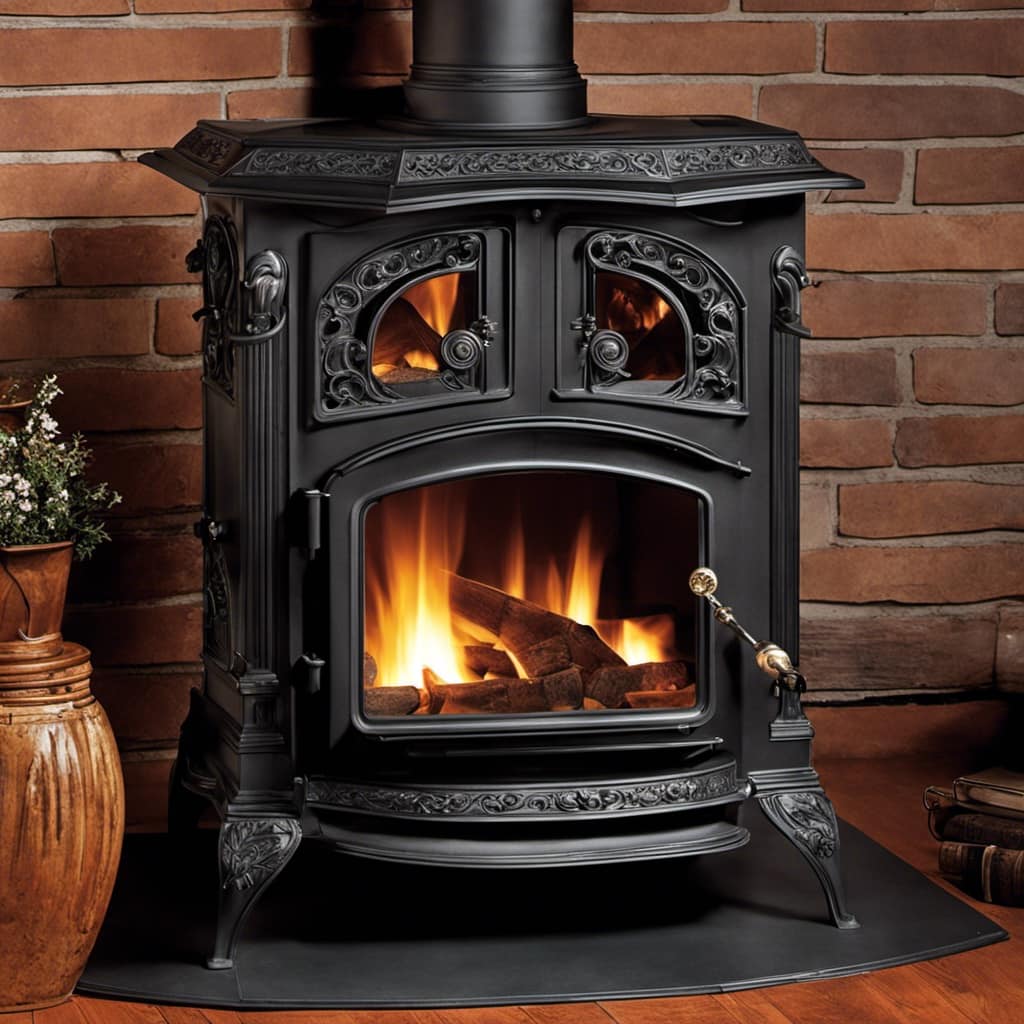
Snuggled up by my wood stove to keep warm, I was surrounded by a strong smell of smoke. Upon further examination, I discovered that the problem was coming from the pipe, which emitted smoke whenever the firewood caught fire.
Determined to find a solution, I delved into the common causes of these leaks and ways to fix them. Join me as we explore the importance of proper ventilation, tips for improving airflow, and preventative maintenance to ensure efficient combustion and eliminate smoke leaks from the wood stove pipe.
Key Takeaways
- Improper installation, gaps, loose connections, and damaged or deteriorated pipe can cause smoke leaks from the wood stove pipe.
- Thoroughly inspect connections, joints, and seams for visible gaps or cracks, and use high-temperature sealant or heat-resistant tape to seal them.
- Regular chimney cleaning and troubleshooting draft issues promptly are crucial for proper ventilation and to prevent smoke leakage.
- Seal gaps or cracks, use high-quality insulation materials, install a heat shield, and clean the chimney regularly to improve airflow and combustion efficiency in a wood stove.
Common Causes of Smoke Leaks From the Wood Stove Pipe
I’ve noticed that a common cause of smoke leaks from the wood stove pipe is improper installation. When the stove pipe isn’t installed correctly, gaps and loose connections can occur, allowing smoke to escape.
Another cause of smoke leaks is a damaged or deteriorated pipe. Over time, the pipe can develop cracks or rust, creating openings for smoke to seep through. Additionally, if the pipe isn’t the correct size for the stove, it can lead to smoke leaks.

Troubleshooting smoke leaks involves inspecting the pipe for any visible gaps, loose connections, or damage. It’s important to check the joints, seams, and connections thoroughly.
In the next section, we’ll discuss how to check for and fix leaks in the wood stove pipe.
How to Check for and Fix Leaks in the Wood Stove Pipe
To effectively troubleshoot and repair leaks in the wood stove pipe, a thorough inspection of the connections, joints, and seams is crucial. Checking for leaks can be done by visually inspecting the pipe for any visible gaps or cracks. Additionally, running your hand along the pipe while the stove is in use can help you feel for any air escaping.
Once leaks are identified, fixing them promptly is important to prevent smoke from escaping into your home. Common methods for fixing leaks include using high-temperature sealant or heat-resistant tape to seal any gaps or cracks. It’s also important to check the condition of the gaskets and replace them if necessary.
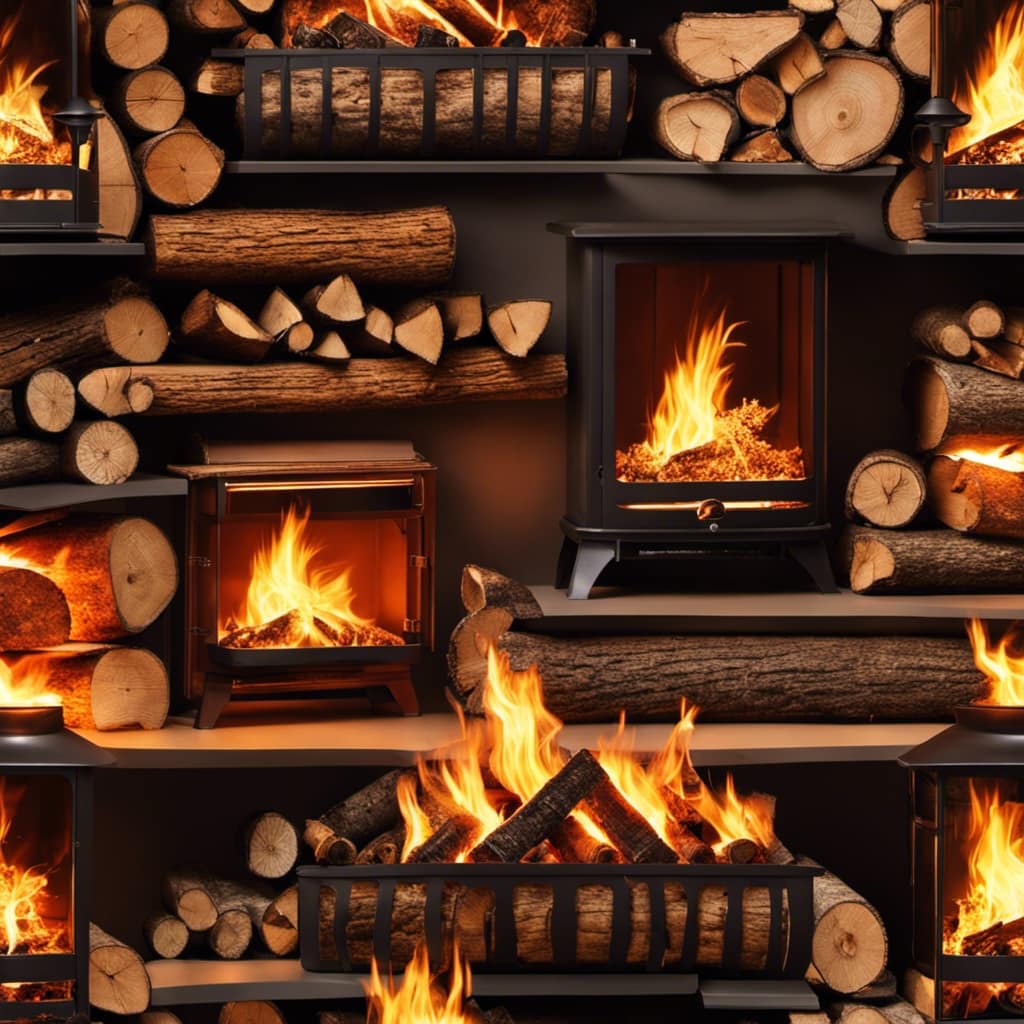
By addressing and fixing leaks in the wood stove pipe, you can ensure the efficient and safe operation of your wood stove system.
Now, let’s transition to understanding the importance of proper ventilation in wood stove systems.
Understanding the Importance of Proper Ventilation in Wood Stove Systems
While proper ventilation is essential for the safe and efficient operation of wood stove systems, it’s important to understand the specific factors that contribute to effective ventilation.
One of these factors is the importance of chimney cleaning. Over time, creosote and other debris can accumulate in the chimney, obstructing the flow of air and potentially causing draft issues. Regular chimney cleaning helps to remove these obstructions and ensures that the stove operates at its full potential.
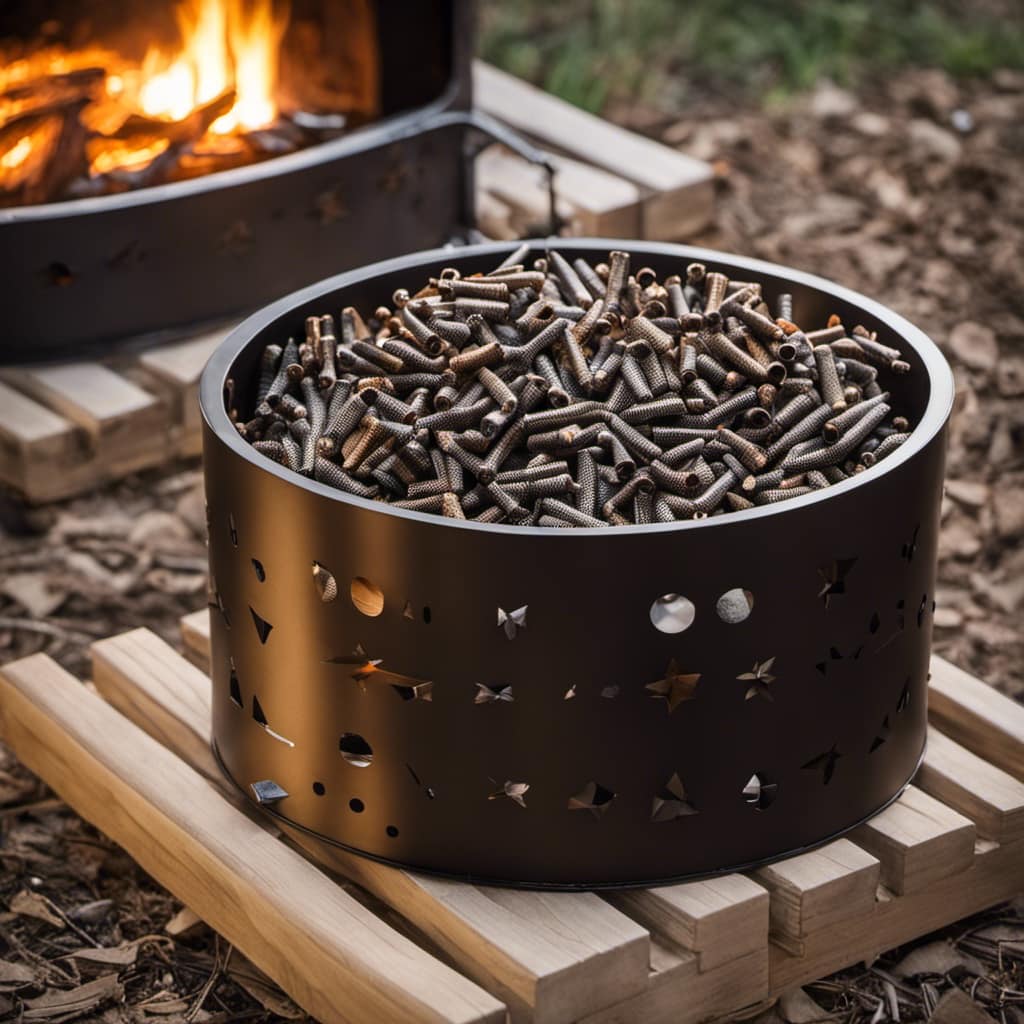
Troubleshooting draft issues is another crucial aspect of maintaining proper ventilation. This involves identifying and addressing any problems that may be affecting the draft, such as a blocked flue or a malfunctioning damper. By addressing these issues promptly, homeowners can prevent smoke from leaking into their homes and ensure that the wood stove operates safely and efficiently.
Tips for Improving Airflow and Combustion Efficiency in a Wood Stove
With proper maintenance and regular cleaning, homeowners can significantly improve the airflow and combustion efficiency in their wood stoves. This ensures better heat distribution and reduces the risk of smoke leakage. To achieve optimal performance, here are some tips:
-
Improving insulation:
-
Seal any gaps or cracks in the stovepipe and chimney to prevent air leaks.

-
Use high-quality insulation materials to enhance heat retention.
-
Install a heat shield behind the stove to reduce heat loss through the wall.
-
Troubleshooting draft issues:
-
Check for obstructions in the chimney, such as bird nests or debris, and clean if necessary.
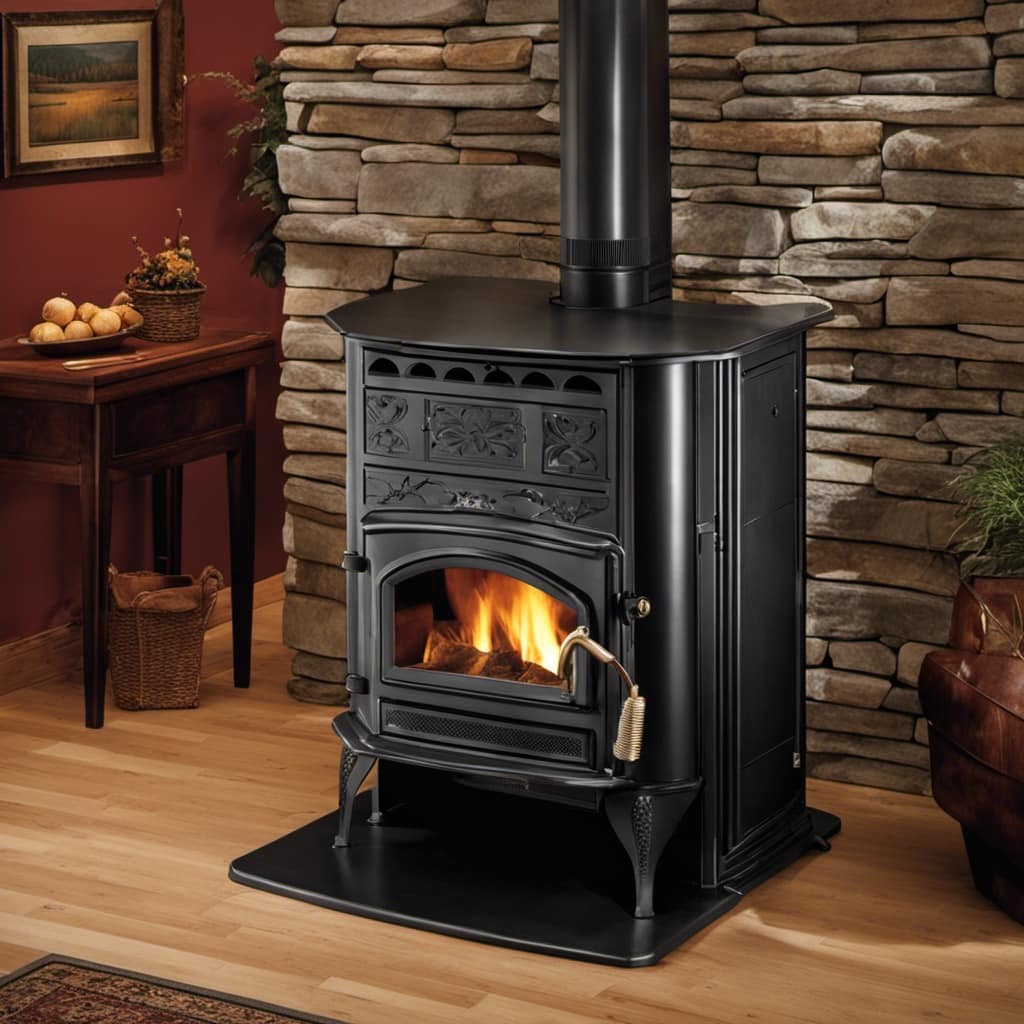
-
Adjust the damper to regulate the airflow and improve draft control.
-
Consider using a draft inducer or installing a draft hood to enhance the draft efficiency.
Following these suggestions won’t only enhance the performance of your wood stove but also ensure a safer and more efficient heating experience.
Preventative Maintenance and Best Practices for Avoiding Smoke Leaks From the Wood Stove Pipe
Regularly inspecting and promptly addressing any potential issues can greatly help in preventing smoke leaks from the wood stove pipe, ensuring a safer and more efficient heating experience. One important aspect to consider is wood stove pipe insulation. Insulating the pipe not only prevents heat loss, but also reduces the chances of smoke leaks. It’s recommended to use high-quality insulation materials specifically designed for wood stove pipes.

When troubleshooting wood stove smoke leaks, start by checking the connections between the pipe sections. Loose or damaged connections can lead to smoke escaping. Additionally, inspect the pipe for any cracks or holes that may be causing leaks. These can be repaired using high-temperature sealant or by replacing the damaged section.
Regular maintenance and proper insulation are key to avoiding smoke leaks and enjoying a warm and efficient wood stove.
Frequently Asked Questions
How Do I Properly Start a Fire in a Wood Stove?
To properly start a fire in a wood stove, it’s crucial to select proper firewood and use kindling. Proper firewood selection ensures efficient burning and reduced smoke production. Kindling helps ignite the fire quickly for a successful start.
What Are Some Common Signs of a Leak in a Wood Stove Pipe?
Some common signs of a wood stove pipe leak include visible smoke or soot around the pipe joints and a strong smell of smoke in the room. To fix a leaky wood stove pipe, you may need to replace damaged sections or tighten the connections.
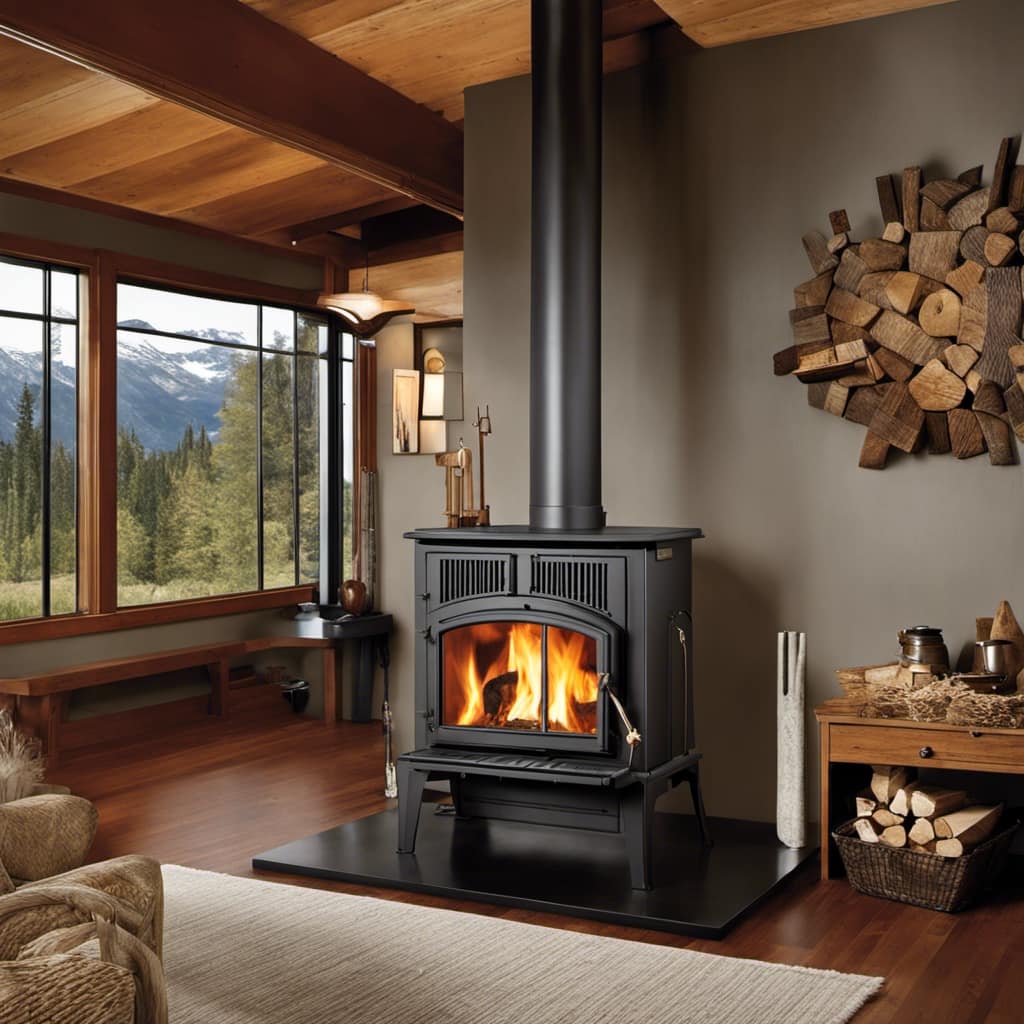
Can I Use Any Type of Wood in My Wood Stove?
I can use different types of wood in my wood stove, but it’s important to follow best practices. Using dry hardwood like oak or maple will provide efficient heat and minimize smoke.
How Often Should I Clean My Wood Stove Pipe?
Regular wood stove pipe maintenance is essential for safe and efficient operation. Cleaning should be done at least once a year, but frequency depends on usage. Neglecting this task can lead to blockages, reduced airflow, and potential fire hazards.
Are There Any Safety Precautions I Should Take When Using a Wood Stove?
When using a wood stove, it is crucial to take safety precautions. Ensure proper ventilation to avoid smoke leaks. Interesting statistic: According to the National Fire Protection Association, heating equipment accounted for 15% of home fire deaths in 2018.
Conclusion
After identifying and fixing the smoke leaks in your wood stove pipe, you can finally enjoy a cozy and efficient heating experience.

Imagine the comforting crackling sound of the fire, the warmth radiating throughout your home, and the clean, smoke-free air filling your lungs.
With proper ventilation and regular maintenance, your wood stove will continue to provide reliable and efficient heating for years to come.
Stay warm and worry-free with a well-functioning wood stove system.
Growing up surrounded by the vast beauty of nature, Sierra was always drawn to the call of the wild. While others sought the comfort of the familiar, she ventured out, embracing the unpredictable and finding stories in the heartbeat of nature.
At the epicenter of every remarkable venture lies a dynamic team—a fusion of diverse talents, visions, and passions. The essence of Best Small Wood Stoves is crafted and refined by such a trio: Sierra, Logan, and Terra. Their collective expertise has transformed the platform into a leading authority on small wood stoves, radiating warmth and knowledge in equal measure.





